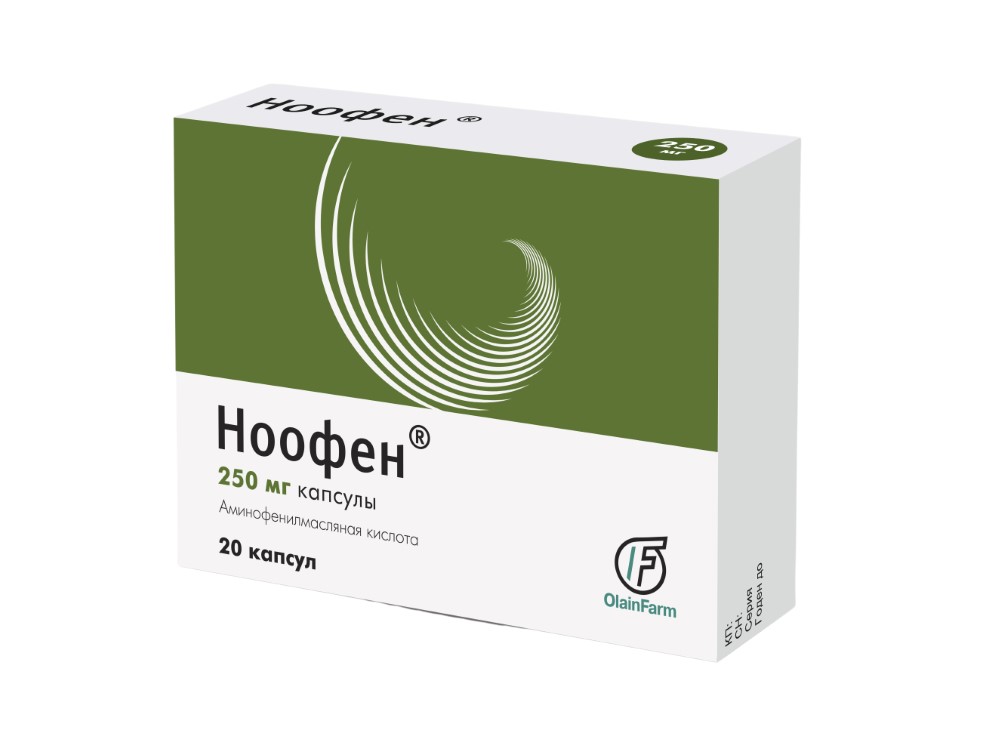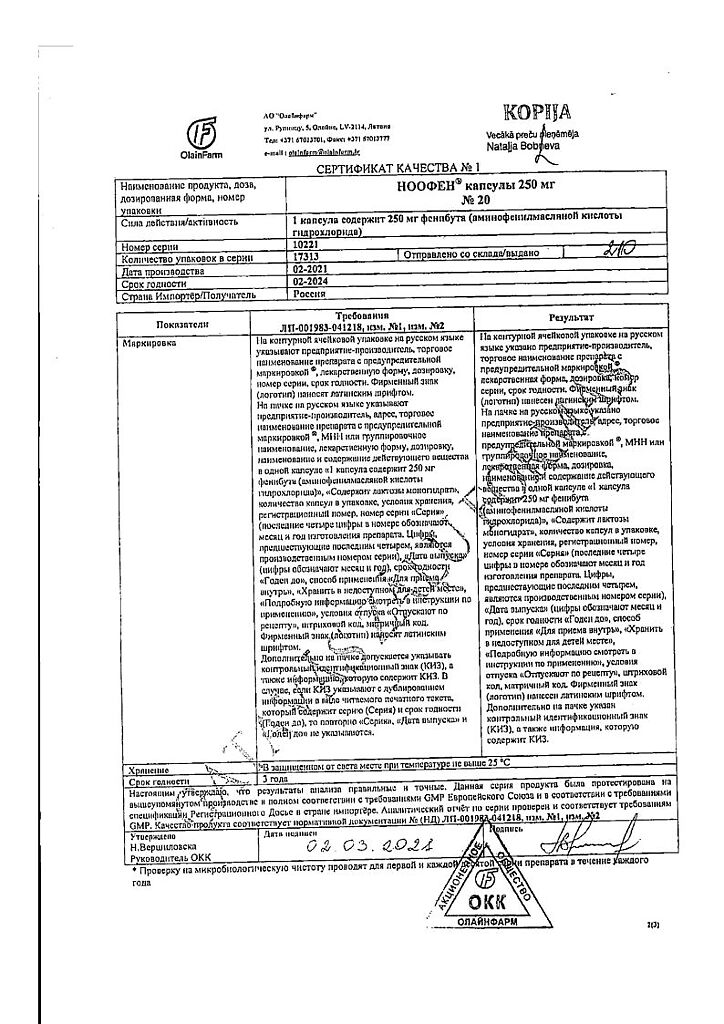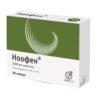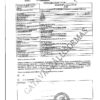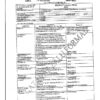No products in the cart.
Noophen, capsules 250 mg 20 pcs
€70.05
Description
Noophen is a nootropic drug, a derivative of gamma-aminobutyric acid and phenylethylamine. It has tranquilizing properties, stimulates memory and learning ability, increases physical ability to work, eliminates psycho-emotional tension, anxiety, fear and improves sleep. It does not affect the choline and adrenoreceptors.
The drug prolongs the latent period and shortens the duration and severity of nystagmus. Significantly reduces manifestations of asthenia and vasovaginal symptoms, including headache, feeling of heaviness in the head, sleep disturbance, irritability, emotional lability, increases mental performance, improves well-being, increases interest and initiative, motivation to active work without sedation or agitation.
In contrast to tranquilizers, Noophen improves psychological parameters (attention, memory, speed and accuracy of sensory-motor reactions). Formation of addiction and dependence on the drug and withdrawal syndrome are not observed.
Pharmacokinetics
Absorption and distribution
After oral administration the drug is well absorbed and penetrates into all tissues of the body. About 0.1% of γ-amino-β-phenyl butyric acid hydrochloride of the administered dose of the drug penetrates into brain tissue; in patients of young and elderly age the penetration through the HEB may increase. After 3 h γ-amino-β-phenyl butyric acid hydrochloride is detected in urine, at the same time the concentration in the brain tissue is not decreased, it is detected in the brain after another 6 h.
The drug does not accumulate in the body when repeated use.
The highest binding of γ-amino-β-phenyl butyric acid hydrochloride occurs in the liver (80%), it is not specific.
Metabolism and excretion
80-95% of the drug is metabolized in the liver to pharmacologically inactive metabolites. 5% is excreted unchanged by the kidneys. The day after administration, γ-amino-β-phenyl butyric acid hydrochloride can only be detected in the urine; it is detected in the urine 2 days after administration, but the detectable amount is 5% of the administered dose.
Indications
Indications
asthenic and anxiety-neurotic conditions;
stuttering, tics and enuresis in children;
insomnia and night anxiety in the elderly;
Meniere’s disease, dizziness associated with dysfunction of the vestibular analyzer of various origins;
prevention of motion sickness during kinetosis;
as part of complex therapy for alcohol withdrawal syndrome to relieve psychopathological and somatovegetative disorders.
Pharmacological effect
Pharmacological effect
Noofen is a nootropic drug, a derivative of gamma-aminobutyric acid and phenylethylamine. It has tranquilizing properties, stimulates memory and learning, increases physical performance, eliminates psycho-emotional tension, anxiety, fear and improves sleep. Does not affect cholinergic and adrenergic receptors.
The drug lengthens the latent period and shortens the duration and severity of nystagmus. Significantly reduces the manifestations of asthenia and vasovegetative symptoms, incl. headache, feeling of heaviness in the head, sleep disturbance, irritability, emotional lability, increases mental performance, improves well-being, increases interest and initiative, motivation for vigorous activity without sedation or agitation.
Unlike tranquilizers, under the influence of Noofen, psychological indicators (attention, memory, speed and accuracy of sensory-motor reactions) improve. There was no development of addiction or dependence on the drug or withdrawal syndrome.
Pharmacokinetics
Suction and distribution
After oral administration, the drug is well absorbed and penetrates into all tissues of the body. About 0.1% of γ-amino-β-phenylbutyric acid hydrochloride penetrates into brain tissue from the dose of the drug taken; in young and elderly patients, increased penetration through the BBB is possible. After 3 hours, γ-amino-β-phenylbutyric acid hydrochloride is detected in the urine, at the same time the concentration in brain tissue does not decrease; it is detected in the brain after another 6 hours.
With repeated use, the drug does not accumulate in the body.
The greatest binding of γ-amino-β-phenylbutyric acid hydrochloride occurs in the liver (80%), it is not specific.
Metabolism and excretion
80-95% of the drug is metabolized in the liver to pharmacologically inactive metabolites. 5% is excreted unchanged from the body by the kidneys. The day after taking the drug, γ-amino-β-phenylbutyric acid hydrochloride can only be detected in the urine; it is determined in urine 2 days after administration, but the detectable amount is 5% of the administered dose.
Special instructions
Special instructions
With long-term use, it is necessary to monitor the cellular composition of the blood and liver function indicators.
Impact on the ability to drive vehicles and operate machinery
During the treatment period, patients should be careful when driving vehicles and engaging in other potentially hazardous activities that require increased concentration and speed of psychomotor reactions, since some patients may experience central nervous system disorders, such as drowsiness and dizziness.
Active ingredient
Active ingredient
Aminophenylbutyric acid
Composition
Composition
Active ingredient:
aminophenylbutyric acid hydrochloride 250 mg
Excipients:
lactose monohydrate – 180 mg,
potato starch – 67.5 mg,
calcium stearate – 2.5 mg.
Composition of capsules No. 0 white:
titanium dioxide (E171) – 2%, gelatin – up to 100%.
Pregnancy
Pregnancy
Use during pregnancy and breastfeeding is not recommended, because there are not enough clinical observations.
In experimental studies on animals, the mutagenic, teratogenic and embryotoxic effects of the drug were not established.
Contraindications
Contraindications
acute renal failure;
pregnancy;
lactation period;
children under 8 years of age (for this dosage form);
rare congenital galactose intolerance, lactase deficiency or glucose-galactose malabsorption (since the drug contains lactose);
hypersensitivity to the components of the drug.
The drug should be prescribed with caution to patients with erosive and ulcerative diseases of the gastrointestinal tract (due to the irritating effect of the drug, it is recommended to prescribe the drug in smaller doses).
Side Effects
Side Effects
From the nervous system: drowsiness and increased symptoms (at the beginning of treatment), dizziness, headache.
From the digestive system: nausea (at the beginning of treatment).
From the skin and subcutaneous tissues: rarely – allergic reactions (skin rash, itching).
From the liver and biliary tract: with long-term use in high doses – hepatotoxicity.
If any of these side effects worsen, or if the patient notices any other side effects, the doctor should be informed.
Interaction
Interaction
For the purpose of mutual potentiation, Noofen® can be combined with other nootropic drugs, reducing the doses of Noofen® and the combined drugs.
Extends and enhances the effect of hypnotic, neuroleptic and antiparkinsonian drugs.
Overdose
Overdose
Noofen® is low-toxic. There have been no reports of overdose cases.
Symptoms: drowsiness, nausea, vomiting, dizziness. With long-term use of high doses, eosinophilia, arterial hypotension, renal impairment, and fatty liver may develop (taking more than 7 g).
Treatment: gastric lavage, symptomatic treatment, maintenance of vital functions. There is no specific antidote.
Storage conditions
Storage conditions
In a dry place, protected from light, at a temperature not exceeding 25 °C
Shelf life
Shelf life
2 years
Manufacturer
Manufacturer
Olainfarm, Latvia
Additional information
| Shelf life | 2 years |
|---|---|
| Conditions of storage | In a dry, light-protected place at a temperature not exceeding 25 °C |
| Manufacturer | Olinefarm, Latvia |
| Medication form | capsules |
| Brand | Olinefarm |
Related products
Buy Noophen, capsules 250 mg 20 pcs with delivery to USA, UK, Europe and over 120 other countries.

